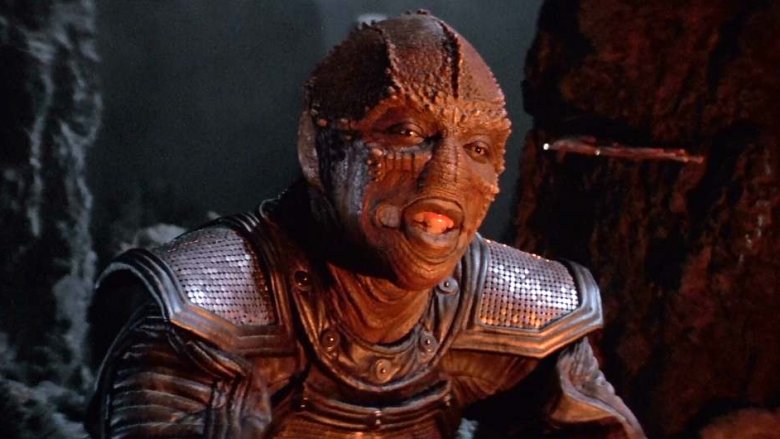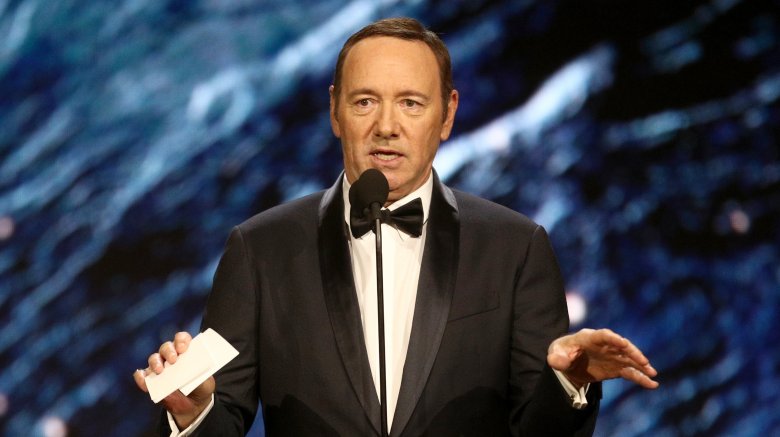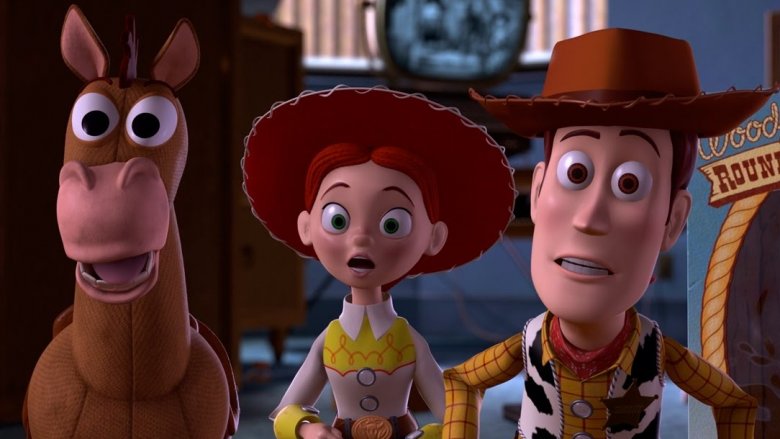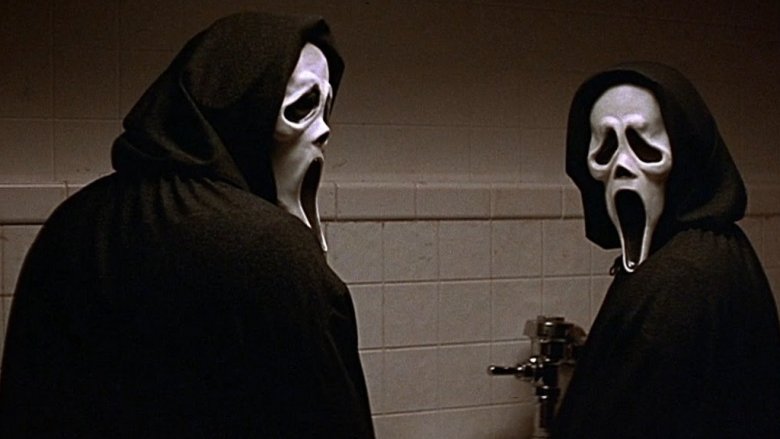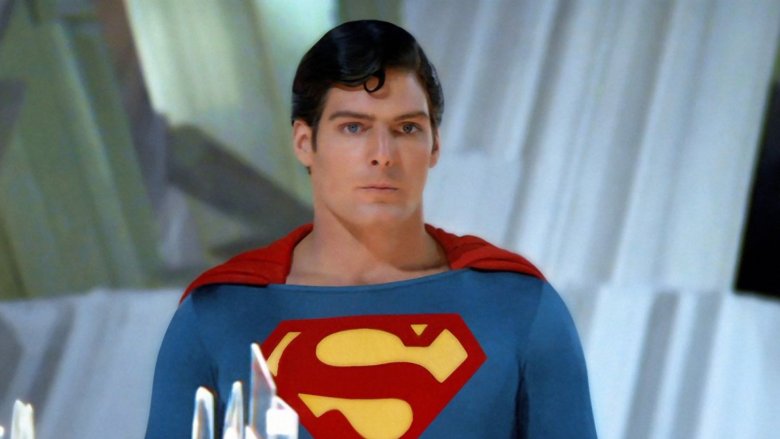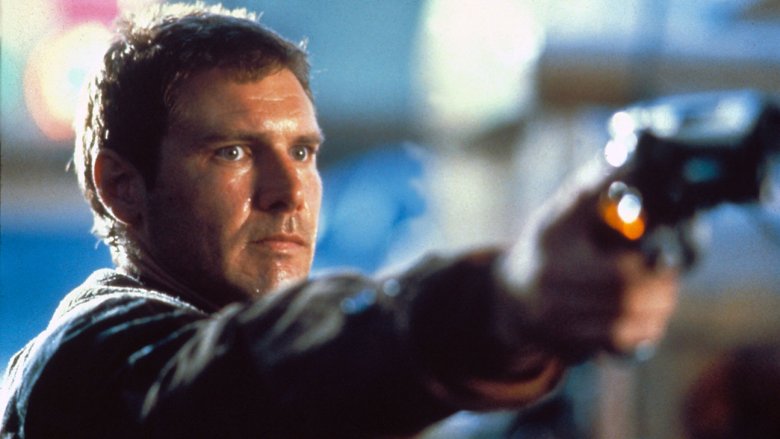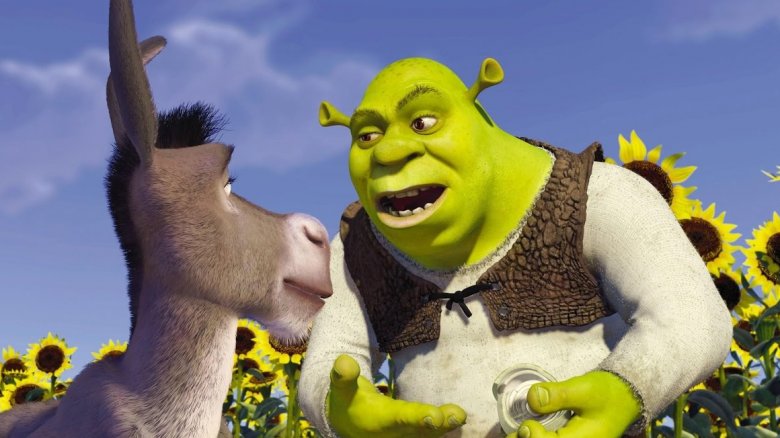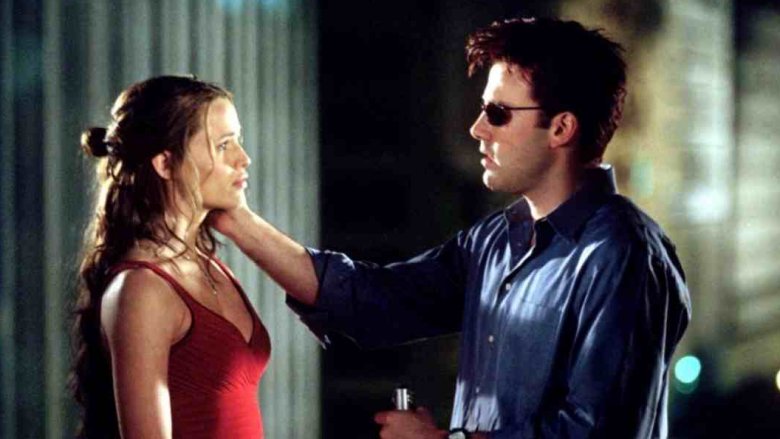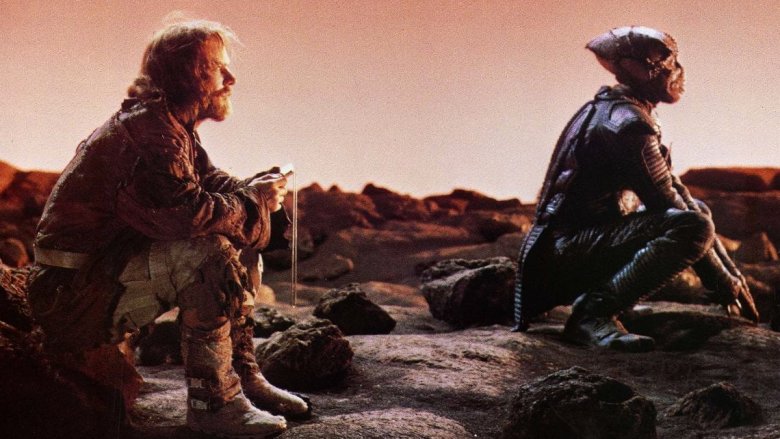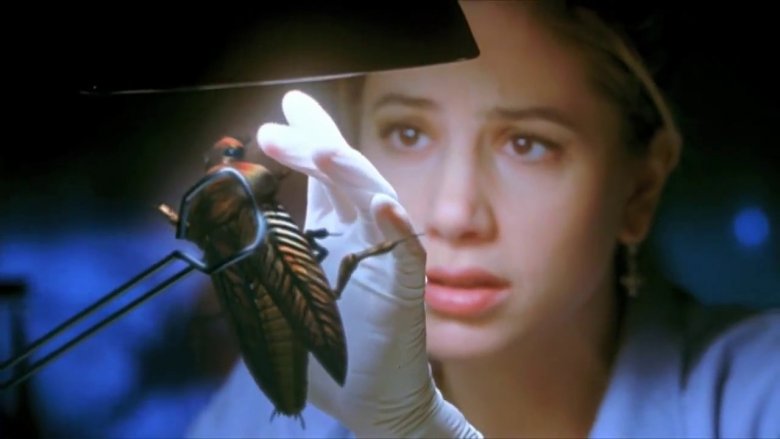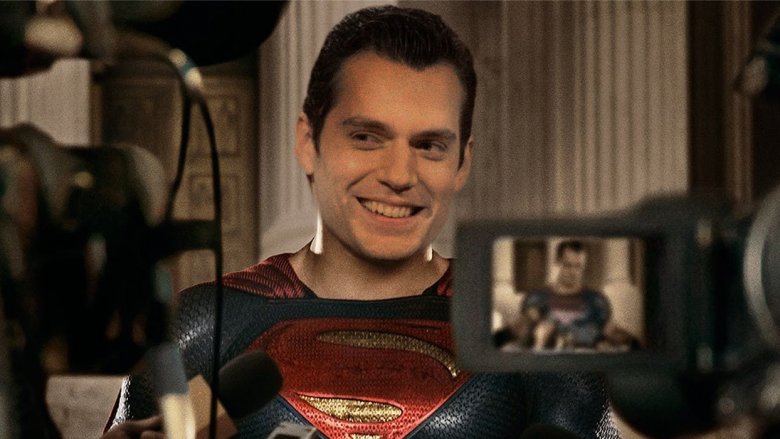Last-Minute Changes That Cost Filmmakers A Ton Of Money
Movies are a big-money industry, with millions upon millions being sunk into months, if not years of production. Hundreds, sometimes thousands of people are employed — and the slightest alteration in a story, cast or crew can often have a ripple effect that causes a film's budget to quickly skyrocket. Mix in sudden, last-minute changes to an already long process, and the results can cost a company millions.
In fact, when you consider all the ways a movie can get messed up during production, it's amazing anything enjoyable ever makes it to the big screen. Here's a look at movies that had to dig especially deep into their production budget pocketbooks to pay for last-minute changes to keep the magic alive, if not simply on screen.
Not quite All the Money (but a lot of it)
A victim of his own making, and recently exposed as part of the #MeToo movement, Kevin Spacey has been accused by more than a dozen men of various sorts of sexual misconduct. While his talent as an actor is unquestionable, the more recent news has had some pretty negative results. His hit Netflix series House of Cards entered its sixth and final season without him, and the International Academy of Television Arts and Sciences decided not honor Spacey with its 2017 International Emmy Founders Award.
It was Spacey's starring role in All the Money in the World, however, that caused an impressively costly redo. Director Ridley Scott decided to complete wipe Spacey from the film, replacing him in every scene with Christopher Plummer. The cost was pre-estimated to be approximately $10 million, one fourth of the film's original $40 million shooting budget. Even more impressive, this was done after the movie initially wrapped. Within 36 hours of making the call to pull Spacey, Plummer was announced, and 200 new shots were filmed in only nine days.
Aside from the cost of reshoots — which included a controversial sum for co-star Mark Wahlberg — there were additional marketing expenses, including the early push for Spacey to be nominated for an Oscar that was canned, and the film was pulled from the AFI Fest, likely costing Sony a heavy six or seven figures. Fortunately for everyone, Plummer more than adequately picked up the slack, and became the oldest actor to be nominated for an Oscar.
You're a (really expensive) toy!
The first Toy Story was a touching animated movie that helped make Pixar a filmmaking juggernaut. It made a small mint's worth of moola, but when Disney and Pixar originally planned to release Toy Story 2, it was a 60-minute, direct-to-home-video release, much like the studio had successfully done (at least in terms of making money) with sequels to Aladdin, Cinderella, Lion King, Mulan and even Hunchback of Notre Dame. Disney simply didn't do big-screen sequels...Yet.
At a screening with Disney consecutives, they decided it was simply too good — and likely valuable a property — to leave on the home video market, instead opting to change gears and release it in theaters as a 90-minute feature. With that happy news you'd think the production crew would be ecstatic — the movie was already a year into production and the studio gave it an even bigger blessing. Pixar's John Lasseter, however, wasn't quite so happy; instead, he took the project over and, with the story team, rewrote the entire plot in two days.
With an estimated budget of $90 million for the entire movie, we'll assume that about half of the budget was used in the nine-month-long fire drill that took place after the previous yearlong production. A lot of the heavy lifting in terms of character creation and key environments was already done, but there were also a number of notable additions — including the character of Jessie, who was added in the rewrite.
I Scream, You Scream...
Movie companies constantly worry about leaks. Production teams often create crew jackets and patches with fake production names just to throw people off. This has, of course, become even more difficult with everyone carrying a high-res camera in their pocket and the ability to share anything with countless family, friends and strangers within seconds.
Decades ago, when the internet was a relative puppy, a draft of the Scream 2 script was posted to the information superhighway during the film's production. The spoiled ending sent director Wes Craven, the production team and, Miramax into a panic. Fearing a spoiled ending would ruin the movie, they quickly decided to rewrite and reshoot a decent portion of the movie.
It set back production by months — and they even took additional precautions to prevent the new script from being copied. Even if it was, and even if the actors decided to get loose lips, three different endings were filmed to throw everyone off. As a result, audiences got both a leaked and a surprise ending to a decent horror movie that some argue surpassed the original. With a production budget of $24 million, rewrites, two months of reshoots (for 52 days of shooting), and an extra ending certainly contributed a significant chunk to that amount.
Not too Super, Man
1973's The Three Musketeers and its quickly released sequel, The Four Musketeers: Milady's Revenge, used the (then) unusual tactic of filming both movies at the same time, significantly cutting down production time. Hoping to take advantage of the same scheme, Superman and Superman II went into simultaneous production.
As production costs mounted and it became clear that lightning might not strike twice (especially if it hadn't yet struck once), production on Superman II was stopped so producers could focus on the first one. Soon after that film proved to be a success, production started again on the sequel — sort of. There were a few difficulties, including Marlon Brando, who wanted more money and took the matter to court. Making matters worse, the director was swapped, putting Richard Lester in charge instead of Richard Donner.
Lester quickly scrapped some footage — about 75 percent of the film had already been shot — and essentially started over, making the movie his own. With a final budget around $54 million, most of that was certainly spent on possibly unnecessary reshoots to create the version we saw on screen. It's yet another instance of two last-minute decisions creating massive production expenses but ultimately resulting in a film — and even a sequel — that critics actually enjoyed, and made some money.
Still, fans clamored for years to see Donner's original vision for the caped crusader — and they got their wish when the "Donner Cut" of Superman II was officially released on DVD in 2006, proving once again that the smartest companies know how to turn conflict into profit.
Blades of cash
The silver screen adaptation of the Philip K. Dick novel Do Androids dream of Electric Sheep, 1982's Blade Runner is considered a sci-fi classic, beloved by millions. Of course, nothing that great is easy to make.
After a few test screenings yielded less than stellar feedback from audiences, several last-minute changes were made, including the infamous Harrison Ford voiceover throughout the film. There were also plot changes, and the ending was tweaked to make it a bit less enigmatic and more positive. Of the $28 million production cost, at least $7 million was over budget — nearly one-third of the film's cost.
The voiceover was so quick, Ford apparently never got to read it in advance, recording it as he read it (apparently eight times), and fairly unhappy about doing it. While adding a voiceover to an entire movie might not seem like a monumental cost (although trained voice actors will tell you it should be), the total added cost left Blade Runner just shy of recouping its costs in theaters. Happily for sci-fi fans (and the many filmmakers who've since been influenced by the movie), cult status awaited on the home video market — and 35 years after it faded from theaters, it got a sequel almost as widely acclaimed as the original.
The green machine
One of the saddest stories surrounding a last-minute change to a movie concerns former Saturday Night Live star Chris Farley, who was the original voice of Shrek. At the time of his tragically young passing in 1997, Farley had reportedly recorded 80 to 90 percent of his lines.
Farley's fellow SNL alum Mike Myers was quickly cast to replace him. Myers reportedly requested — and received — script changes to better accommodate his brand of humor. Adding to the cost, Myers realized that his initial take on the big green guy wasn't quite right — he wanted to re-record his lines with a Scottish accent. At that point, more than a third of the movie had been animated, meaning mouth movements, facial expressions and a whatever else was in the scene would need to be redone. The cost was estimated at $4 million to $5 million, about 10 percent of the film's final budget.
In the end, of course, it paid off. In spades. And sequels. And a Christmas TV special. Oh, and kids' meal toys.
Dare to see the Devil in the details
Before Marvel started its own film studio — and the massively successful Marvel Cinematic Universe — other studios attempted to turn the publisher's characters into blockbuster franchises. The results were often less than spectacular. Case in point: 2003's Daredevil, starring Ben Affleck as Matt Murdock — blind lawyer by day, secretly superpowered vigilante by night.
It was never meant to be a big-budget superhero movie, but the success of Sam Raimi's Spider-Man gave the studio other ideas, and a movie that started out as a dark look at the repercussions of violence ended up needing to be more family-friendly. With a contractual obligation to make the movie PG-13, director Mark Steven Johnson had to re-edit Daredevil — twice. Test audiences apparently wanted more romance between Daredevil and Elektra (Jennifer Garner), so more quick cuts were made. And, again because of the success of the effects-laden Spider-Man, the studio wanted more visual thrills.
Nearly 30 minutes were chopped, including a subplot involving Coolio, and in the end, the budget went from $50 million to $80 million thanks to boosted special effects and edits. All's well that ended well for the studio — Daredevil made enough money to spawn the Elektra spinoff — and it didn't turn out too badly for Affleck and Garner, who were married in 2005.
Enemy ours
In Enemy Mine, Louis Gossett Jr. plays an alien named Drac and Dennis Quaid is Earth pilot Willis Davidge. They're stranded together on a distant planet after a battle with — wait for it — each other. Naturally, they band together to weather the elements and defeat a common enemy.
The studio was unhappy with the early shots from director Richard Loncraine, and decided to halt production after a large portion of shooting was completed. Execs still loved the concept, actors and story — enough to inject an abandoned mine subplot — so director Wolfgang Petersen was brought in to finish the job. Or, really, restart the job and then finish it, because the footage, sets, and makeup weren't up to snuff.
After the studio-mandated overhaul, Enemy Mine's original $17 million budget ballooned to over $40 million. It never recouped it costs, earning only $12 million — and, eventually, bragging rights as a cult classic.
Stinkin' cockroaches
Guillermo del Toro's vision for Mimic — which included a mutant tree beetle taking over humans — ended up falling flat with studio execs who wanted giant killer cockroaches instead. Add that fundamental disagreement to the list of other things the studio didn't appreciate — including a gay main character and mixed-race band of survivors — and the result is what del Toro calls his "imperfect child" and an experience that almost made him quit making movies altogether. A second unit was reportedly even enlisted in case the studio decided to replace him.
With an estimated budget of $30 million, the movie didn't recoup, generally panned by critics and earning only $25 million. The better-late-than-never happy ending is that del Toro later got to go back and create a Director's Cut version, eliminating second-unit shots and reinstating more atmosphere — and he eventually went on to direct classics like Hellboy, Pan's Labyrinth, and The Shape of Water.
Just us lagging
With a production budget of $300 million, a slew of iconic superheroes in one movie, and a ton of talent on and off the screen, Justice League just had to succeed, right? Well, no — and that hefty price tag really didn't help. Part of the cost was incurred by a director swap that became necessary when Zack Snyder stepped down to deal with a family tragedy. Writer/director Joss Whedon came in and reshot 15 to 20 percent of the movie, costing at least $25 million.
Having to reshoot scenes is costly in and of itself. Bringing the cast back in from other projects can certainly lead to difficulties — as the studio was reminded by the silliness surrounding Henry Cavill's hairy upper lip. The actor, reprising his role as Superman for the movie, had since grown a mustache for Mission: Impossible — Fallout, and M:I studio Paramount took advantage of the opportunity to put a kink in a competitor's project. Warner Bros. was forced to digitally remove Cavill's mustache via CGI, adding millions to the already inflated budget.
All that extra time and money didn't help Justice League with critics, and although the movie still made hundreds of millions of dollars at the box office, the fallout inspired Warners to re-examine its approach and retool its plans for the DC Extended Universe. Let's call this one a mixed blessing.
